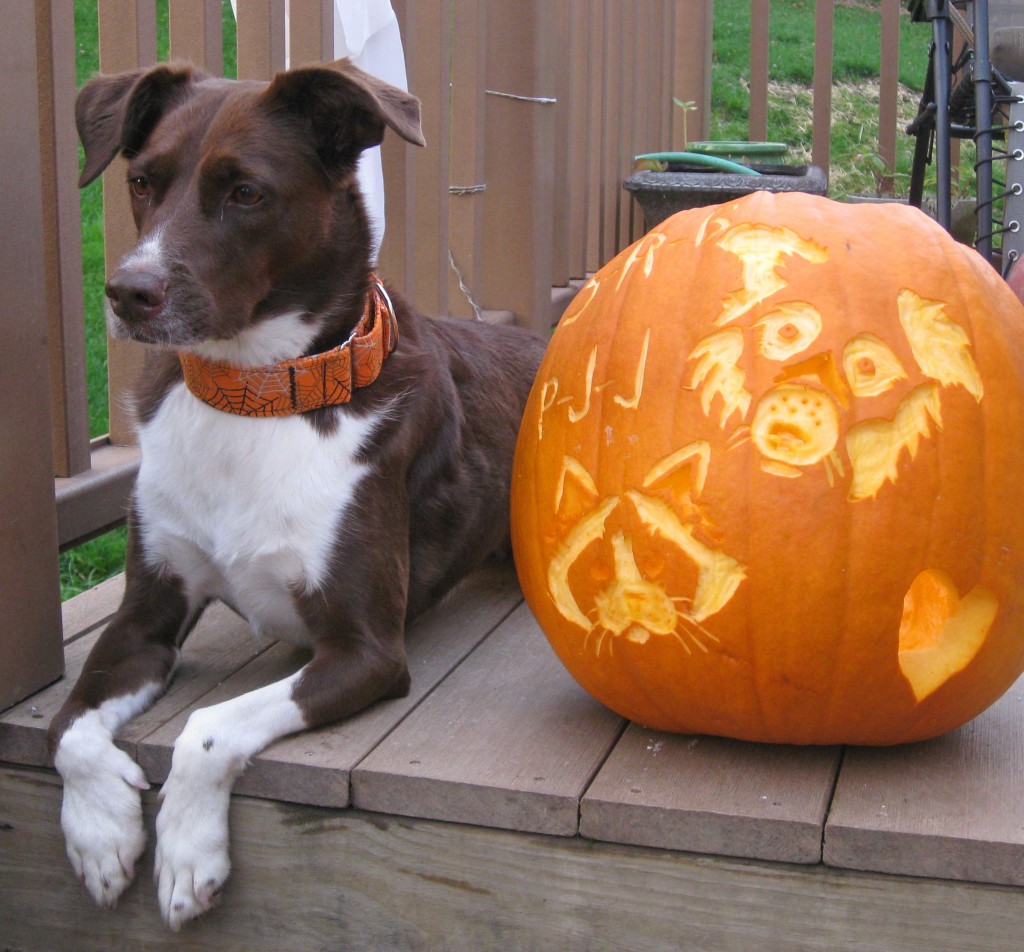 Yes, it is that time of year again when small children get high on candy and tween/teens terrorize the neighborhoods. Halloween used to be one of my favorite holidays of the year. I loved the revelry and the rabble rousing and the getting to dress up like fun characters was just a bonus. My love for the holiday has certainly diminished after getting Shayne. Ms. Scaredy Pants made celebrating or enjoying the holiday quite difficult, especially at the beginning.
Yes, it is that time of year again when small children get high on candy and tween/teens terrorize the neighborhoods. Halloween used to be one of my favorite holidays of the year. I loved the revelry and the rabble rousing and the getting to dress up like fun characters was just a bonus. My love for the holiday has certainly diminished after getting Shayne. Ms. Scaredy Pants made celebrating or enjoying the holiday quite difficult, especially at the beginning.
If halloween only consisted of calm, laid back kids dressed as 50’s kids in poodle skirts and leather jackets, or kids dressed as the latest pop star, or even kids as princesses or sports starts life would probably be simple. Unfortunately there are all sorts of ghosts, ghouls, bloody heads, kids in masks, and scary sights that go with this evening.
It is so important that we do our best to prepare our dogs for the potentially terrifying evening and the potentially scary walks leading up to that night as people put up their decorations. I’ll talk later about night-of preparations but I want to mention now that there is a lot that people can do to help their dogs prepare in the weeks leading up to Halloween.
One of the things I do is classically condition a happy response to the screaming, howling, creepy noises that some decorations make. I start by playing the sound muffled by some cloth and then throwing treats for the dogs to get–at this point they notice the sound but are not bothered by it whatsoever. We repeat this process quite a few times (reducing the amount it’s muffled) with one particular noise maker before practicing with different screaming sounds. I’ve also been known to find spooky sounds youtube video and play it while the dogs eat their Kongs. I also try to find sound tracks of people scaring other people because that primal scream just cannot be replicated (and our neighbor things it’s HILARIOUS to scare the pants off teenagers–which I love watching–but the scream like crazy when he jumps out of places). When working with this ALWAYS start with the sound at a low volume and work your way up.
I also really try to prep the dogs on seeing people in scary costumes. I start with an inexpensive black cape with a hood. I will keep the hood off and just swoosh around in the cape dropping yummies for the dogs (if this was too much movement, there would be no swooshing to start). I progress to putting the hood up and having more and more menacing movements still dropping yummies as I go. When I introduce a mask, the first thing I do is just put the mask on the ground and let them investigate. If they are okay with it, I’ll start to hold it nonchalantly, then putting it up to my face briefly, then propped on my head, and then actually covering my face. I’ve borrowed quite a few scary masks from friends to help my pups feel more comfortable. Like everything else we do, we want to go slow–the aim is NOT to terrify the dogs!
I typically don’t bring treats along with me during walks in the neighborhood. Neither dog needs them and we don’t have an issue of loose dogs so I don’t generally bring them BUT during this time of year I absolutely start bringing treats. Automated ghosts, motion activated zombie hands, animated light-up cats, giant inflatable jack-o-lanterns and other scary objects start popping up left and right in our neighborhood and I want to be ready to do some counter/classical conditioning or some emergency “shovel food in her face and run away!”. I never want to get too close where my dogs are actively fearful–I want to have enough space where they can look at the scary object and still eat treats. Being below threshold is important
So, take some time over the next few weeks to help prepare your dog for Halloween. Go slow and never force your dog to interact closely with something they are terrified of (particularly people in costume)–we want them to learn that they do not have to feel concerned over these items, not just flood them and teach them they can’t escape.

Really, really great advice. We typically avoid Halloween fun at all costs and tend to close up our house and hide from the swarms of children. I walk the dog early before the trick or treating starts and then we gather in the living room, close the curtains, and turn up the television, making sure to have treats ready in case the neighbourhood children don’t get the hint. We live in a smaller area this year that is kind of cut off from the rest of the city. I think it’s going to be easier on us all.